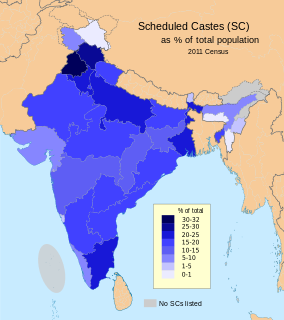 W
WThe Scheduled Caste (SCs) and Scheduled Tribes (STs) are officially designated groups of people in India. The terms are recognised in the Constitution of India and the groups are designated in one or other of the categories. For much of the period of British rule in the Indian subcontinent, they were known as the Depressed Classes.
 W
WAdivasi is the collective term for tribes of the Indian subcontinent, who are considered indigenous to places within India wherein they live, either as foragers or as tribalistic sedentary communities. The term is also used for ethnic minorities, such as Chakmas of Bangladesh, Tharus of Nepal, and Vedda of Sri Lanka.
 W
WDayamani Barla is a tribal journalist and activist from the Indian state of Jharkhand. She became notable for her activism in opposing Arcelor Mittal's steel plant in Eastern Jharkhand that tribal activists say would displace forty villages.
 W
WJatra Bhagat (1888–1916) was an Indian tribal freedom fighter and social reformist. He was the founder of Tana Bhagat Movement among the Oraon tribe.
 W
WBhumij are a Munda ethnic group of India. They primarily live in the Indian states of West Bengal, Odisha, and Jharkhand, mostly in the old Singhbhum district. They speak Bhumij, which is considered by most to be a dialect of Mundari. They can also be found in Bangladesh.
 W
WThe Bhutia are a community of Sikkimese people of Tibetan ancestry, who speak Lhopo or Sikkimese, a Tibetan dialect fairly mutually intelligible with standard Tibetan. In 2001, the Bhutia numbered around 60,300. Bhutia here refers to Chinese of Tibetan ancestry;
 W
WThe Bhuyan are an Indo-Aryan ethnic group found mainly in many districts of Odisha. The 2011 census showed their population to be around 220,859. They are classified as a Scheduled Tribe by the Indian government.
 W
WThe Bonda are a Munda ethnic group approximately 12,000 who live in the isolated hill regions of the Malkangiri district of southwestern Odisha, India, near the junction of the three states of Odisha, Chhattisgarh, and Andhra Pradesh.
 W
WThe Bori are an indigenous tribe of the Adi people living in the districts of East Siang, Upper Siang, Siang and West Siang in the Indian state of Arunachal Pradesh.
 W
WThe Changpa or Champa are a semi-nomadic Tibetan people found mainly in the Changtang in Ladakh and in Jammu and Kashmir. A smaller number resides in the western regions of the Tibet Autonomous Region and were partially relocated for the establishment of the Changtang Nature Reserve. As of 1989 there were half a million nomads living in the Changtang area.
 W
WThe Cholanaikkans are an ethnic group of India. They primarily inhabit the southern Kerala State, especially Silent Valley National Park, and are one of the last remaining hunter-gatherer tribes of the region. The Cholanaikkans speak the Cholanaikkan language, which belongs to the Dravidian family.
 W
WEkalavya is a character from the epic The Mahābhārata. He was a young prince of the Nishadha, a confederation of jungle tribes in Ancient India.
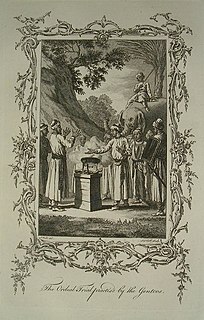 W
WGentoo, also spelled Gentue or Jentue, was a term used by Europeans for the native inhabitants of India before the word Hindu, with its religious connotation, was used to distinguish a group from Muslims and members of other religious groups in India.
 W
WThe Ho people are an Austroasiatic speaking ethnic group of India. They are mostly concentrated in the state of Jharkhand where they constitute around 10.7% of the total Scheduled Tribe population as of 2011. With a population of approximately 700,000 in the state in 2001, the Ho are the fourth most numerous Scheduled tribe in Jharkhand after the Santals, Kurukhs, and Mundas. Ho also inhabit adjacent areas in the neighboring states of Odisha, West Bengal and Bihar bringing the total to 806,921 as of 2001. They also live in Bangladesh and Nepal
 W
WThe Jhonds or Jhonda are aboriginal inhabitants of south eastern Orissa and Northern Andhra Pradesh. They are often referred to as adivasis. The Jhond language is Kui which is classified as a south central Dravidian language. The Jhonds comprise a minority population of the districts of Srikakulam and Vzianagaram in Andhra Pradesh.
 W
WThe Juang are an Austroasiatic ethnic group found only in the Gonsaika hills of Keonjhar district of Odisha. Some Juangs, however migrated to neighbouring plains of Dhenkanal district of Odisha during the Bhuiyan revolt in the late 19th century. The 2011 census showed their population to be around 50,000. The Juang language belongs to the Munda family of the Austroasiatic languages. They are classified as a Scheduled Tribe by the Indian government.
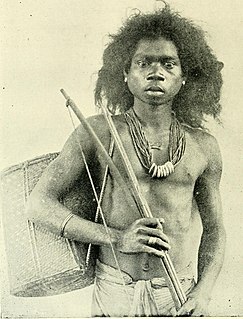 W
WKanikkaran are a tribal community found in the southern parts of Kerala and Tamil Nadu states in India. According to 2011 census there are 24,000 Kanikkars, living in several districts of Kerala and Tamil Nadu. They dwell in forests or near to forests in Thiruvananthapuram and Kollam in Kerala, and Kanyakumari and Tirunelveli districts in Tamil Nadu.
 W
WThe Kharia are an Austroasiatic tribal ethnic group from central India. They originally spoke the Kharia language, which belong to Austroasiatic languages. They are sub-divided into three groups known as the Hill Kharia, Delki Kharia and the Dudh Kharia. Amongst them, the Dudh Kharia is the advanced and educated ethnic community.
 W
WThe Kisan are a tribal group found in Odisha, West Bengal and Jharkhand. They are traditional farmers and a food gathering people. They speak Kisan, a dialect of Kurukh, as well as Odia and Sadri. The tribe mainly lives in northwestern Odisha, in the districts of Sundergarh, Jharsuguda and Sambalpur. Other populations live in Malda district in western West Bengal and Latehar and Gumla districts of western Jharkhand.
 W
WThe Koli people are an ethnic Indian group in Rajasthan, Himachal Pradesh, Gujarat, Maharashtra, Uttar Pradesh, Haryana, Karnataka and Jammu and Kashmir states.
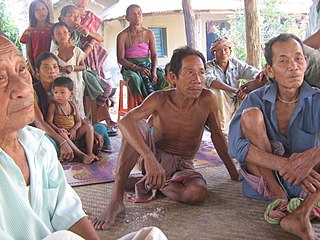 W
WKoloi is one of the 21 scheduled tribes of Tripura state of India. They are mainly dwelling in the West Tripura districts. They speak the language Kokborok which is of Tibeto-Burmese origin.
 W
WThe Konyaks are one of the major Naga ethnic groups. In Nagaland, they inhabit the Mon District—also known as 'The Land of The Anghs'. The Anghs/Wangs are their traditional chiefs whom they hold in high esteem. Facial tattoos were earned for taking an enemy's head.
 W
WThe Koraga are a tribal community found mainly in the Dakshina Kannada, Udupi districts of Karnataka and the Kasaragod district of Kerala, south India. These areas in Karnataka, are altogether often referred to as Tulu Nadu. They are also found in small numbers in adjoining districts of Uttara Kannada, Shimoga and Kodagu. The Koraga are classified by the Government of India as a Scheduled Tribe.
 W
WThe Korwa people are a Munda ethnic group of India. They live mainly on the border between Chhattisgarh and Jharkhand. A small number of Korwa are also found in the Mirzapur district of Uttar Pradesh.
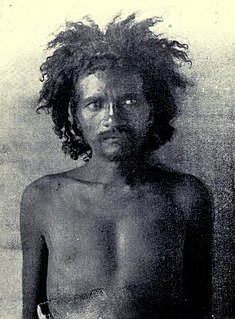 W
WKurumbas (or) Kurumbar (Malayalam : കുറുംമ്പർ)(Kannada : ಕುರುಂಬ) are a designated Scheduled Tribe in the Indian states of Karnataka, Kerala and Tamil Nadu. The Kurumbar are one of the earliest known inhabitants of the Western Ghats, who are engaged in the collection and gathering of forest produce, mainly wild honey and wax. The members of this community are short, have dark skin, and have protruding foreheads.
 W
WThe Lepcha are also called the Rongkup meaning the children of God and the Rong, Mútuncí Róngkup Rumkup, and Rongpa, are among the indigenous peoples of Sikkim, India and Nepal, and number around 80,000. Many Lepcha are also found in western and southwestern Bhutan, Tibet, Darjeeling, the Mechi Zone of eastern Nepal, and in the hills of West Bengal. The Lepcha people are composed of four main distinct communities: the Renjóngmú of Sikkim; the Dámsángmú of Kalimpong, Kurseong, and Mirik; the ʔilámmú of Ilam District, Nepal; and the Promú of Samtse and Chukha in southwestern Bhutan.
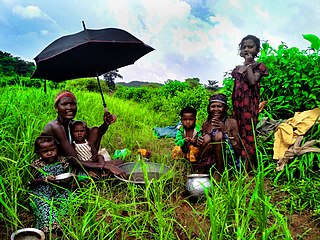 W
WScheduled tribes of the Indian state of Odisha, as recognized by the Constitution of the Indian Republic; a total of 62 distinct tribes. The term "Scheduled Tribes" refers to specific indigenous peoples whose status is acknowledged to some formal degree by national legislation. 13 out of these 62 tribes include are known as "Particularly Vulnerable Tribal Groups" (PTGs). Officially known as "tribals" or "adibasi" they constitute more than 22.5% of the state's total population and 9.7% of the nation's total tribal population.
 W
WThe Minyong are a sub-group of the Adi people, a tribal people living in Arunachal Pradesh, India. The Minyong are found in East Siang, Upper Siang and West Siang district. They have originated from Riga Village. Their villages are mostly found on the right and left bank of river Siang (Brahmaputra), starting from Tuting-Gelling to plains of Assam, Jonai. They consider Donyi-Polo as their religion but recently there has been conversion to Christianity. Minyong people are known for their bravery as they have fought war against British Expedition to the hilly region in late 19th century. They were the strongest sub tribe of The Adis and considered as the most fearsome warriors of the hills. Like any other tribes of ADI they celebrate Solung, Aran and Etor as their festivals.
 W
WThe Munda people are an Austroasiatic speaking ethnic group of India. They predominantly speak the Mundari language as their native language, which belongs to the Munda subgroup of Austroasiatic languages. The Munda are found in the northern areas of east India concentrated in the states of Jharkhand, Bihar, Odisha and West Bengal. The Munda also reside in adjacent areas of Chhattisgarh as well as in portions of Bangladesh. They are one of India's largest scheduled tribes. Munda people in Tripura are also known as Mura, and in Madhya Pradesh they are often called Mudas.
 W
WThe Munda peoples of eastern and central India are any of several tribal groups of people who natively speak Munda languages, formerly also known as Kolarian.
Birsa Munda pronunciation (help·info); 15 November 1875 – 9 June 1900) was an Indian tribal freedom fighter, religious leader, and folk hero who belonged to the Munda tribe. He spearheaded a tribal religious millenarian movement that arose in the Bengal Presidency in the late 19th century, during the British Raj, thereby making him an important figure in the history of the Indian independence movement. The revolt mainly concentrated in the Munda belt of Khunti, Tamar, Sarwada and Bandgaon.
 W
WThe Muria are an adivasi of the Bastar district of Chhattisgarh, India. They are part of the Gondi people. Traditionally they are economically homogenous and strive to work as a collective. They have mixed-sex dormitories where adolescents are sent to practice premarital sex, sometimes with a single partner and sometimes serially. They have an omnivorous diet, with liquor playing a key role in their society.
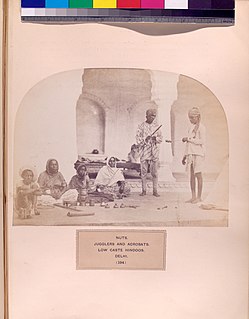 W
WThe Nat are a Hindu caste found in northern India.
 W
WMalavath Purna is an Indian mountaineer. On 25 May 2014, Poorna scaled the highest peak of Mount Everest and, aged 13 years and 11 months, became the youngest Indian and the youngest girl in the world to have reached the summit. The youngest person, male or female, to summit Mount Everest is Jordan Romero, who reached the summit at age 13 years and 10 months. She was accompanied by Sandhanapalli Anand Kumar from Khammam. She scaled Mount Elbrus, the highest peak in Russia and in Europe on 27 July 2017. After reaching the summit of Elbrus, she unfurled a 50ft long Indian Tricolor singing the Indian National Anthem.
 W
WThe Ravula are a tribal community in Kerala and Karnataka. Their common language is known as the Ravula language. They live in the districts of Kannur and Wayanad in Kerala and the Kodagu district of Karnataka. Most of them are agricultural workers and are in the process of detribalizating. It is believed that they were agricultural serfs in the past. During the annual festival at the Valliyurkkavu temple in Mananthavady, Wayand, the Adiyar people gather to trade services with landlords.
 W
WThe Sapera are a Hindu caste found in North India. They are also known as Barwa Sampheriya in West Bengal, Sapela in Punjab and Sparera in Madhya Pradesh.
 W
WThe Sauria Paharia people are a tribal people of West Bengal, Bihar and Jharkhand in India. Sauria Paharia are listed as Scheduled Tribe by the Government of West Bengal, Bihar and Jharkhand. They are found mostly in Santhal Parganas.
 W
WThe Shompen or Shom Pen are the indigenous people of the interior of Great Nicobar Island, part of the Indian union territory of Andaman and Nicobar Islands.
 W
WToda people are a Dravidian ethnic group who live in the Nilgiri Mountains of the Indian state of Tamil Nadu. Before the 18th century and British colonisation, the Toda coexisted locally with other ethnic communities, including the Kota, Badaga and Kurumba, in a loose caste-like society, in which the Toda were the top ranking. During the 20th century, the Toda population has hovered in the range 700 to 900. Although an insignificant fraction of the large population of India, since the early 19th century the Toda have attracted "a most disproportionate amount of attention because of their ethnological aberrancy" and "their unlikeness to their neighbours in appearance, manners, and customs". The study of their culture by anthropologists and linguists proved significant in developing the fields of social anthropology and ethnomusicology.
 W
WThe Toto is an isolated tribal group residing only in a small enclave called Totopara in the Alipurduar district of West Bengal, India. Totopara is located at the foot of the Himalayas just to the south of the borderline between Bhutan and West Bengal. Geographically the location is 89° 20'E 26° 50'N.
 W
WTribals in Kerala are the tribal population found in the Indian state of Kerala. Most of the tribals of Kerala live in the forests and mountains of Western Ghats, bordering Karnataka and Tamil Nadu.
 W
WThere are 46 recognized Scheduled Tribes in Madhya Pradesh, India, three of which have been identified as 'Particularly Vulnerable Tribal Groups (PTGs)(formerly known as 'Special Primitive Tribal Groups'). The population of Scheduled Tribals (ST) is 21.1% of the state population, according to the 2011 census. Bounded by the Narmada River to the north and the Godavari River to the southeast, tribal peoples occupy the slopes of the region's mountains.
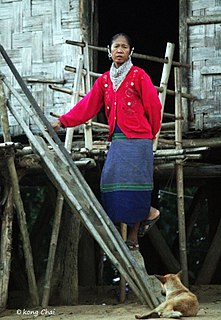 W
WUchoi is one of the 21 scheduled tribes of Tripura state of India. They are mainly dwelling in the Gomati and the South Tripura districts of Tripura state of India. They speak the language Kokborok which is of Tibeto-Burmese and their dialect is similar with Reang tribe. According to the folk tales, Uchois and Reangs are of same origin.
 W
WThe Warli or Varli are an indigenous tribe (Adivasi), living in mountainous as well as coastal areas along the Maharashtra-Gujarat border and surrounding areas. They have their own animistic beliefs, life, customs and traditions, and as a result of acculturation they have adopted many Hindu beliefs. The Warli speak the unwritten Varli language which belongs to the southern zone of the Indo-Aryan languages.
 W
WThe Yenadis also spelled Yanadi are one of the Scheduled tribes of India. They live in Andhra Pradesh in Nelloret, Chittoor and Prakasam districts. The tribe is divided among three subgroups: the Manchi Yanadi, Adavi Yanadi, and Challa Yanadi.
 W
WYerukala or Erukala or Erukula is a tribal community primarily found in Andhra Pradesh and Telangana. The population of Yerukala tribes according to 2011 census is 519337. The total literacy rate among Yerukula is 48.12%. Most live in southern coastal Andhra and Rayalaseema, with a smaller minority in districts of Telangana. Their native language is Yerukala but most have shifted to Telugu. They were vilifed in British sources for being habitual criminals, and so were placed under Criminal Tribes Act, although they were underrepresented in the population of criminals and were most likely targeted for their nomadic lifestyle.